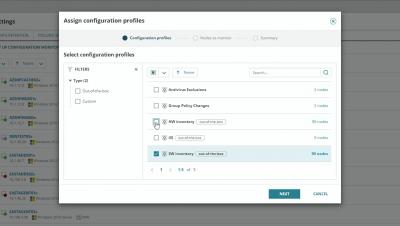Operations | Monitoring | ITSM | DevOps | Cloud
Networks
The latest News and Information on IT Networks and related technologies.
Use SNMP to monitor whatever you need
SNMP (Simple Network Management Protocol) is a popular protocol family, supported by majority of network devices, as well as available for every more or less popular operating system. One of most useful features of modern SNMP servers implementations is user-defined extensions. Simply put, one can instruct SNMP server to hold data returned by any user-defined action (such as output printed by a script or program). That can be used to use SNMP as container protocol, to deliver whatever data you need.
Secret Keys to the Password Kingdom
Predictive Analytics to Improve Decision Making
Predictive analytics for networks are helping businesses optimize their network performance, anticipate network capacity related requirements, and eventually forecast future much more efficiently than ever. Gartner has estimated the value of network monitoring software market at roughly $2.1 Billion, this figure is presently increasing at a growth rate of 15.9% annually. The demand for predictive analytics in network monitoring software has grown beyond enterprises and datacentres.
Account Takeover IS Your Problem
SolarWinds Makes APM More Accessible for All With New AppOptics Dev Edition Free Tool
ITIL Incident Management Overview
Make your monitors nearly real-time
Most of existing IPHost monitor types are passive, meaning they are being polled by IPHost – directly, or via remote network agent. There are two “active” monitors, that perform “Event” type alert, when receiving data from remote host: Syslog monitor and SNMP Generic Trap monitor. Although it’s not possible to transform all possible passive monitors to active, there are several approaches to make monitoring nearly real-time in certain situations.
Network baseline: new technologies, new challenges
The issue of network baseline arose quite some time ago. Everything started from the understanding that networks are not static entities, but are a set of elements that change over time. It was also understood that networks are not only made up of physical and tangible elements, such as a router or a switch, but we must also have more abstract elements, such as the traffic pattern over a WAN link, for example.










